
The Donington Historic Festival signals the beginning of the busiest part of the classic racing season in the UK, and already the event is getting international recognition for the quality of the entry – not bad for a festival that’s just three years old. Even better, the reach of the cars taking part is being stretched out in both directions, with the older cars getting even older and rarer and the modern cars even more recent. It’s the variation that you get to enjoy at classic festivals like this that I love, and it’s a template that’s being used with increasing frequency – which shows it works. I’ll start off this article with a look at half a dozen cars spanning 60 years that highlight that eclectic line-up, and it doesn’t get better than the utterly beautiful Ferrari 512M.
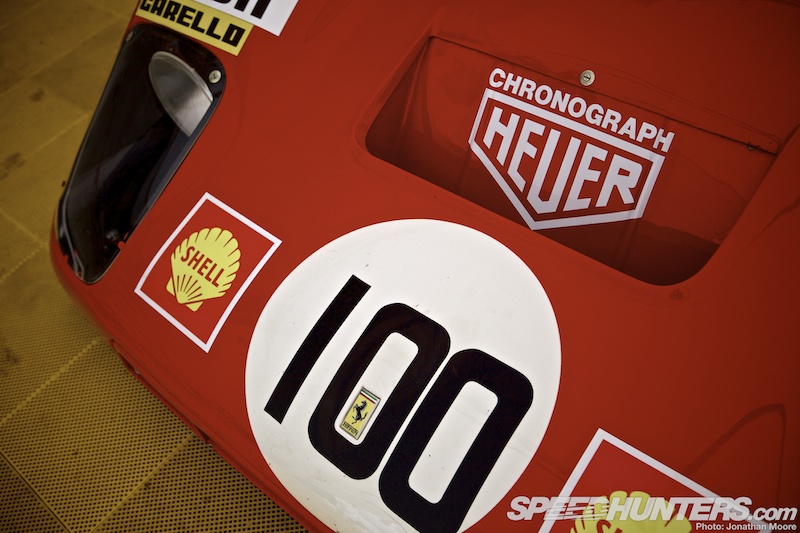
It’s easy to concentrate on its iconic rival, the Porsche 917, but for me the 512M was just as impressive a machine. Like the initial version of the 917, just 25 512S were built to meet homologation requirements for the 1969 World Sportscar Championship, with 15 then converted to the M spec (Modificato) at the end of 1970: a sharper nose profile was matched with more power and a lower weight that was nearer to the Porsches.
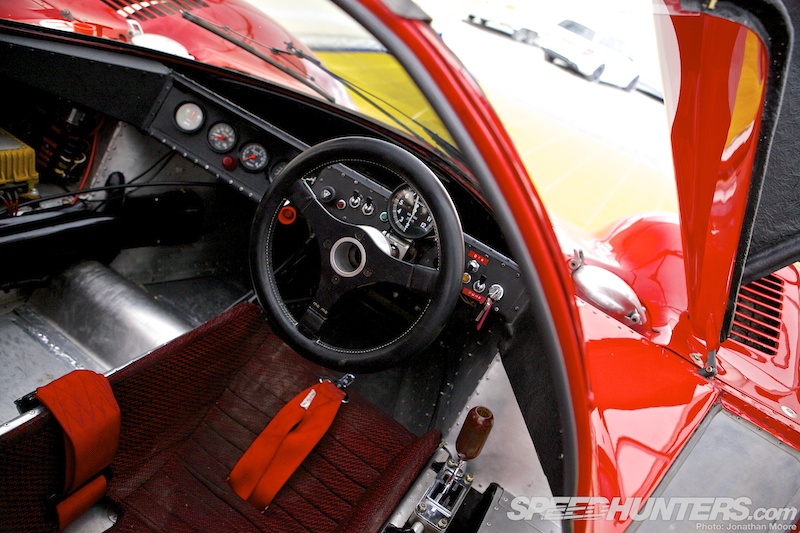
Just like Group C cars of the latter part of that era, the spaceframe 512 used what was effectively a Formula 1 engine: in the M’s case a five-litre V12 developing 620hp in a car weighing just 815kg.
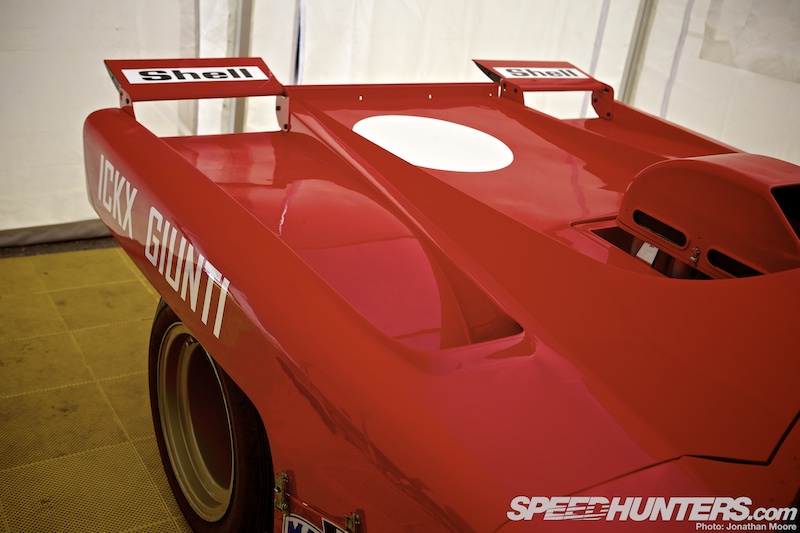
This is an M that Jacky Ickx drove in 1970 at Zeltweg in Austria, with the revised rear aero and airbox over the engine intakes to force even more air into the V12. I love the fact that Ickx beat the pole time on his first racing lap, then continued to lower the time until he broke the F1 lap record he’d set at the same track just two months before.
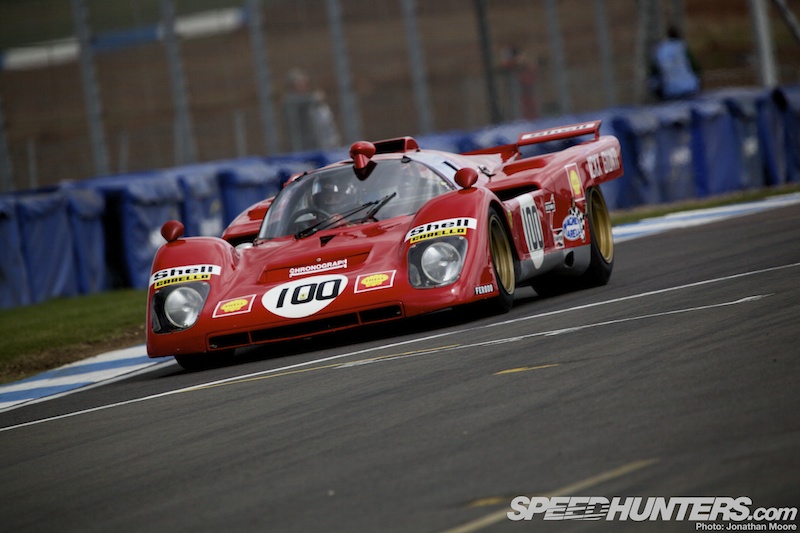
This red devil was being driven in the Pre-’72 Sports Racing Car event, against some thundering Lolas, Chevrons and GT40s, finishing third in the hour-long race. It’s one of those cars that I would normally only expect to see static in a museum, so witnessing it at full tilt on track is a total privilege.

The Ferrari 512M raced mostly in red, but it did also famously race in classic blue Sunoco livery in the US. Those famous colours lead nicely to this thumping great Chevy Camaro, which lined up in the 1966-85 Touring Car race. With two decades to pick from, you can imagine that it was up against an amazingly varied line-up: everything from BMW 2000s to 240Zs, Capris and Porsche RSRs!
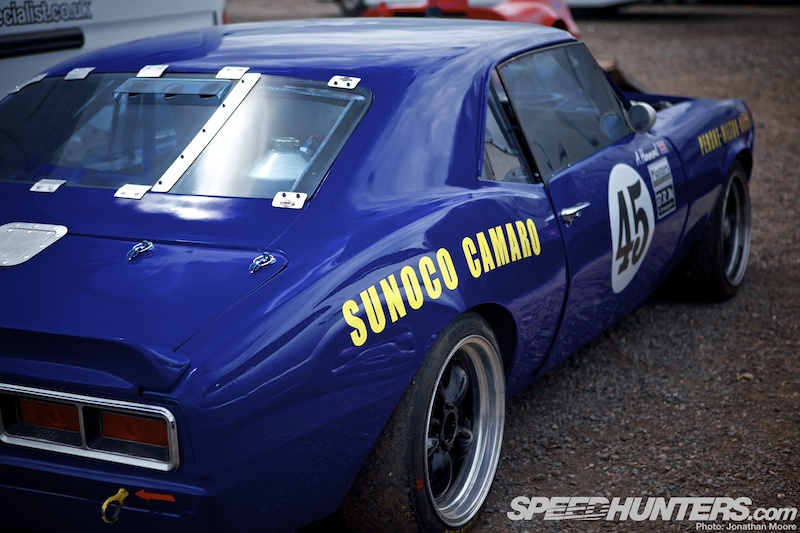
The Camaro SS 350 racer is from 1967 and had an appropriately wide muscle car styling that didn’t really require much toning to turn into a brutal looking race car. The simple Sunoco decals and deep blue colour just accentuate the car’s presence.
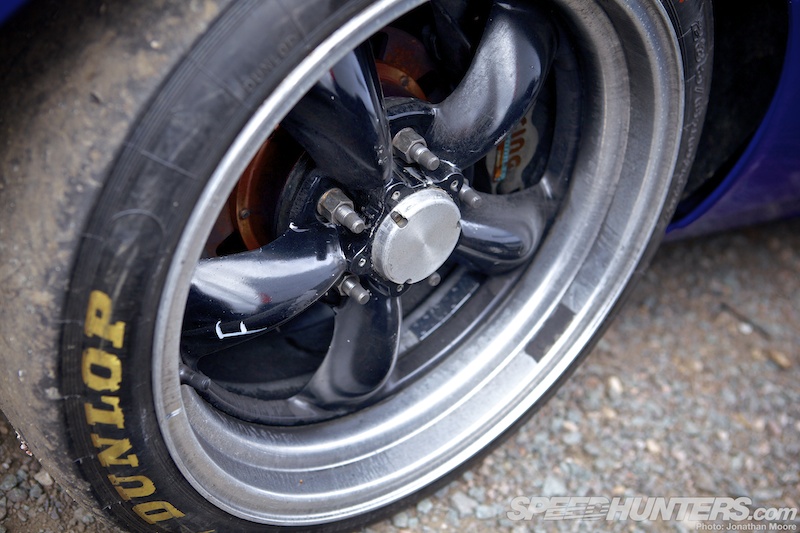
The car has a long racing history in general, and has been further developed by current owner Alec Hammond with lighter bodywork, 17-inch wheels and uprated suspension.
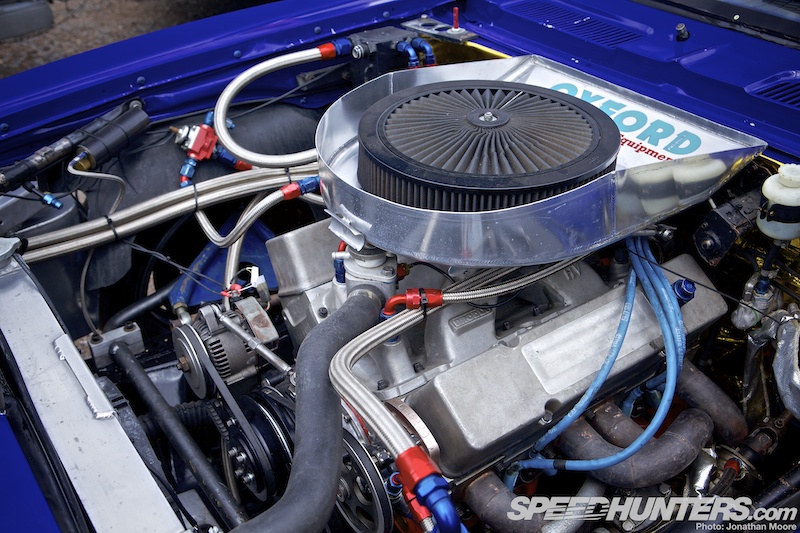
Though the important bit for a Camaro is still the big lump under the hood: a meaty V8 with Brodix heads and vast air filter.

Ground-pounding and with huge presence, the Camaro was another car that looked awesome out on track.
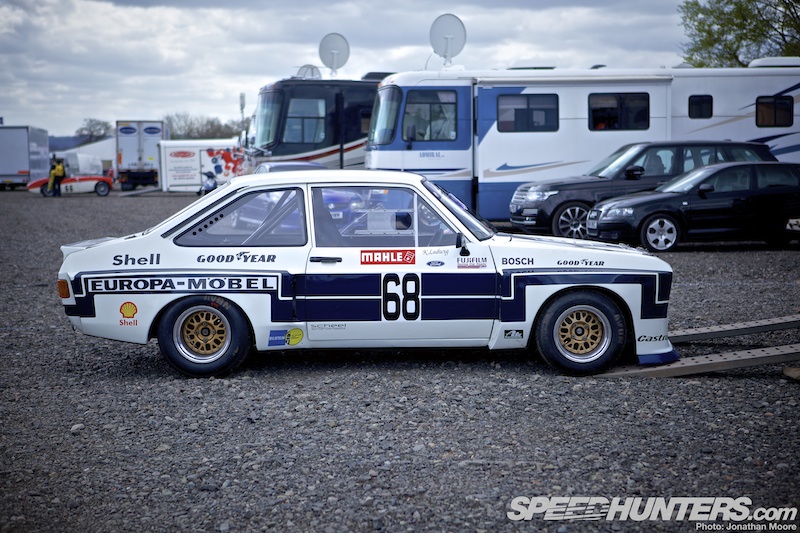
One of the cars the Camaro was up against was this 1975 Escort MkII: a very special Group 2 car.

From the front it might seem relatively sedate…
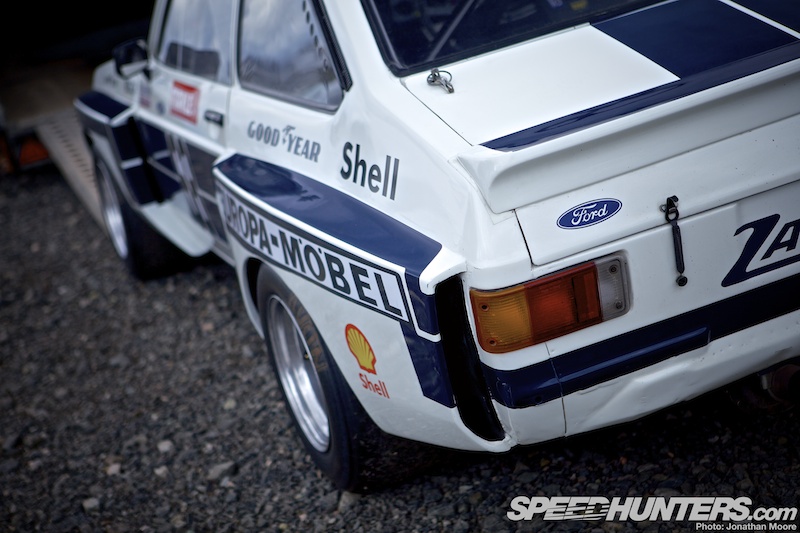
… but from the side you then get a better view of the flared-out arches and body kit that show this was no ordinary Escort.
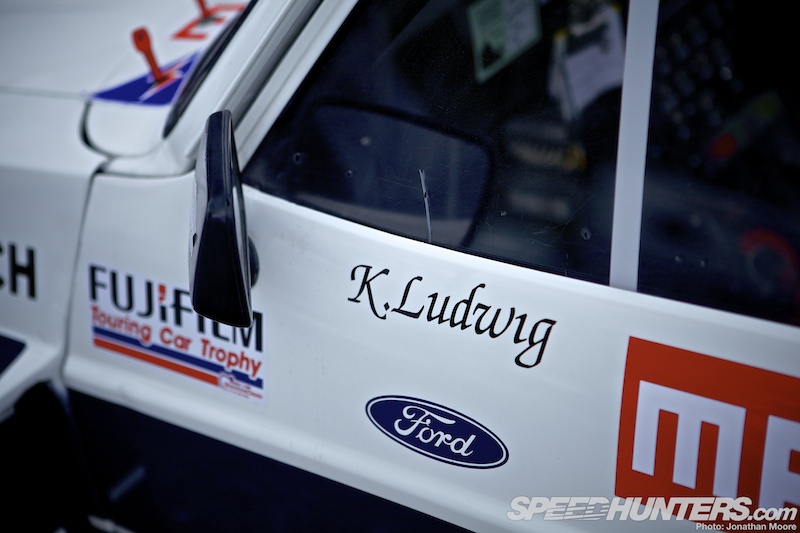
This RS1800 replica is a spot-on homage to Zakspeed’s second-gen Escorts of the mid-’70s, that led to the even more insane Group 4 and 5 machines from the team. In period it was driven by Klaus Ludwig – though in all honesty you could say that about the majority of race cars in the ’70s and ’80s…
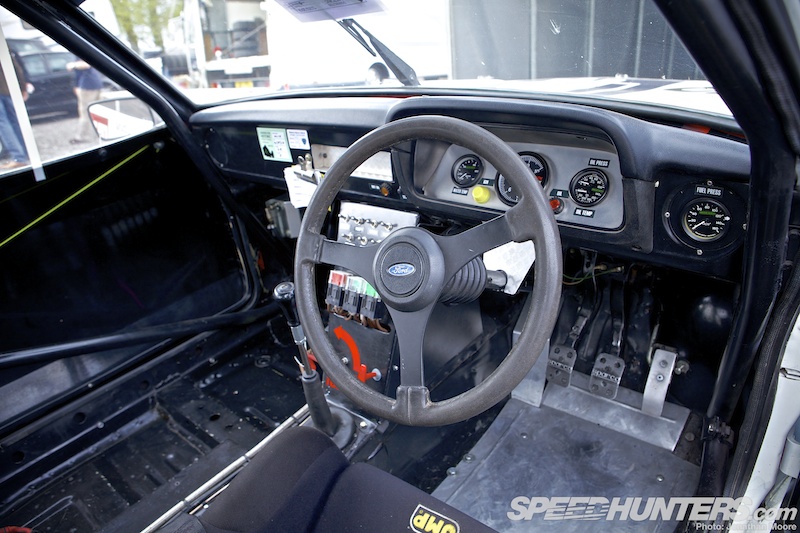
Owner Mark Wright originally built a replica Group 1 Zakspeed Escort before moving onto this MkII project: it’s a regular front-runner on the retro racing scene.
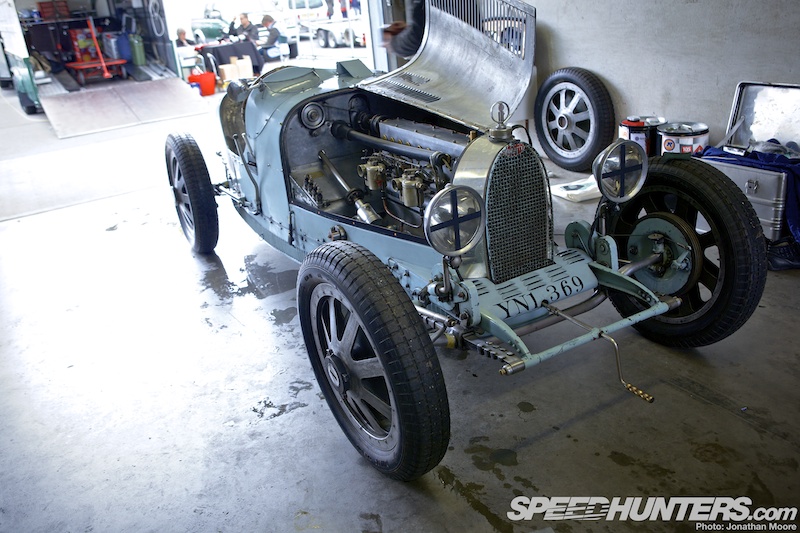
We’ll step back 50 years in time for this Bugatti Type 39, one of the later iterations of the legendary Type 35 that dominated racing in the 1920s and ’30s.

The main difference between a classic T35 and the 39 was the engine: it used a smaller, 1.5-litre straight-eight to comply with Grand Prix regulations of the time, and just 10 were built – this is chassis 4604.
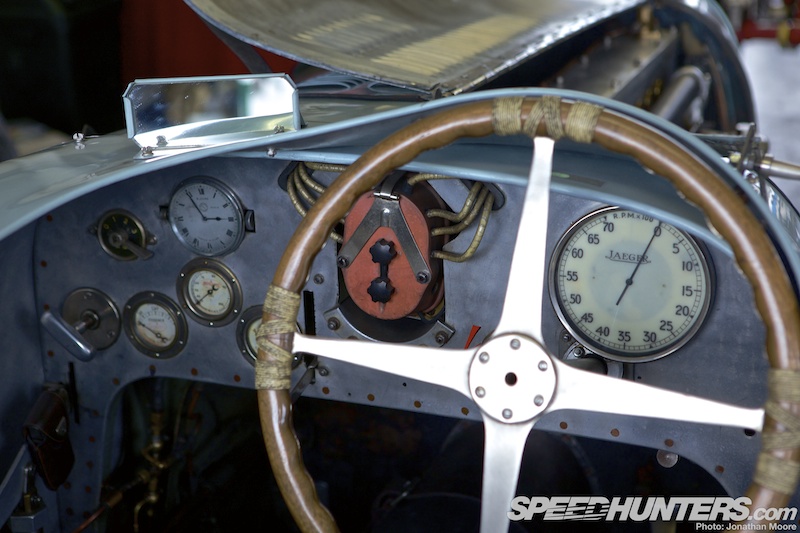
The Bugatti is all about classic shapes, from the lozenge body, propeller-like, string-bound steering wheel and beautiful Jaeger gauges…
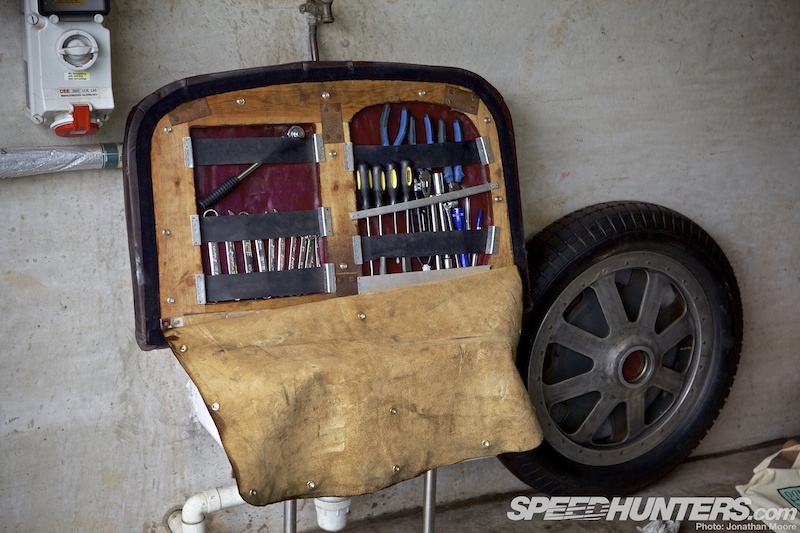
… to those solid spoked wheels and wide bench seat. I hadn’t realised that there was a tool kit in the back of the removable upright section – the tools mightn’t be original, but the location of the tools likely is.
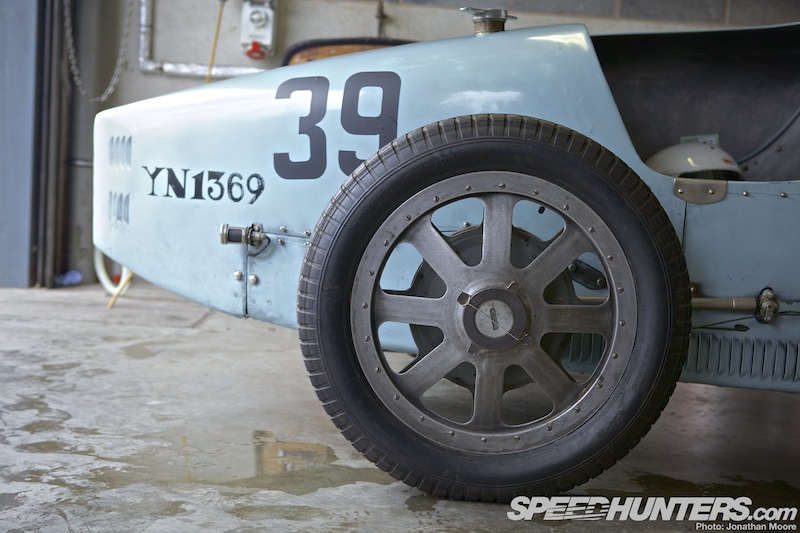
Incredibly, this car is one of the original six constructed for the 1925 Italian Grand Prix at Monza. It has been restored by its British owner, David Hands, using original parts and panels wherever possible. I love the fact that not only is it raced enthusiastically, but it’s presented in this race-worn condition, which feels correct for such a legendary competition car.
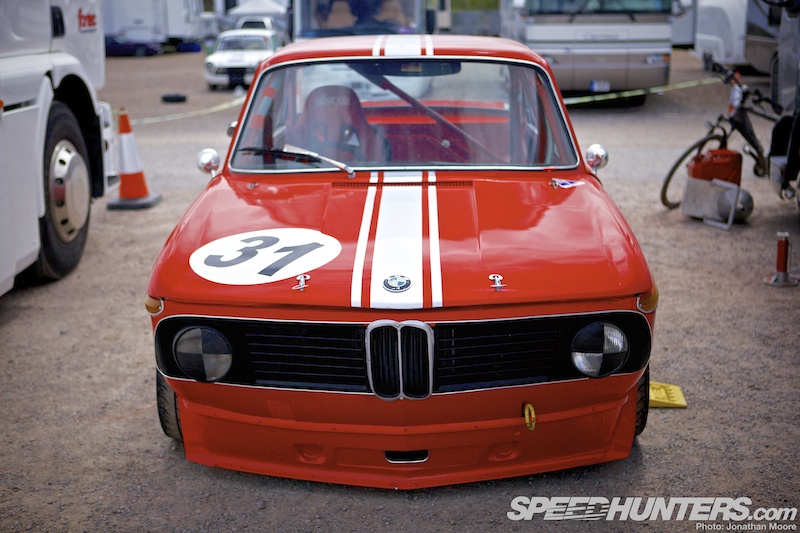
So when is a BMW not a BMW?
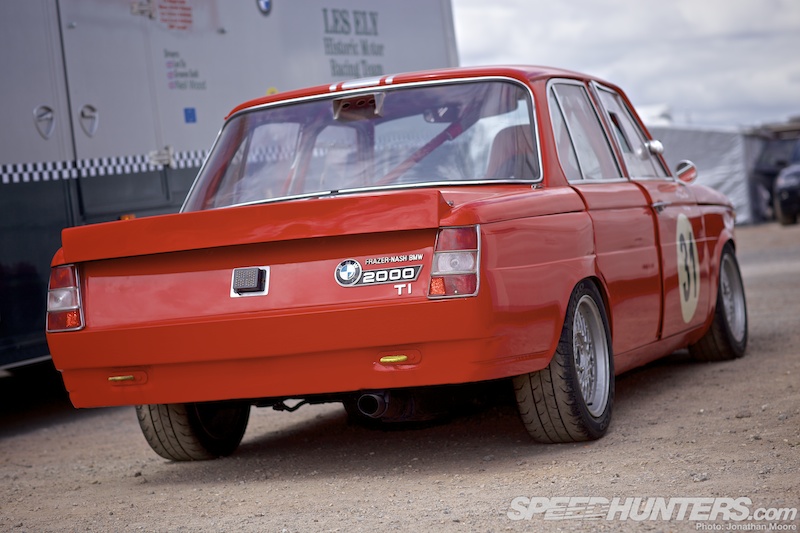
When it’s a Frazer-Nash BMW 2000TI. This 1967 model was an Anglicised four-door saloon sold by Frazer-Nash, a company who had been importing BMWs into the UK since before the Second World War.
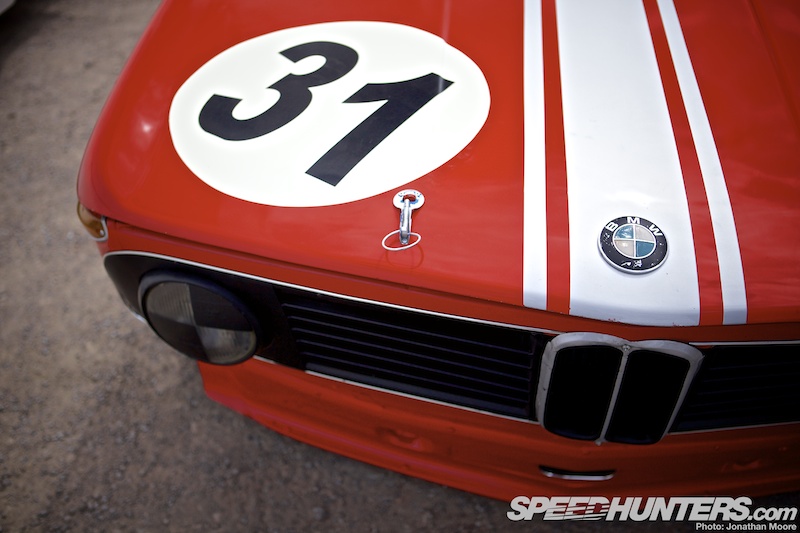
BMWs were expensive at the time – and German – so the FN name was used to add some caché and help sell the cars in the UK, though the spec and trim for the road car was almost exactly the same as the original.
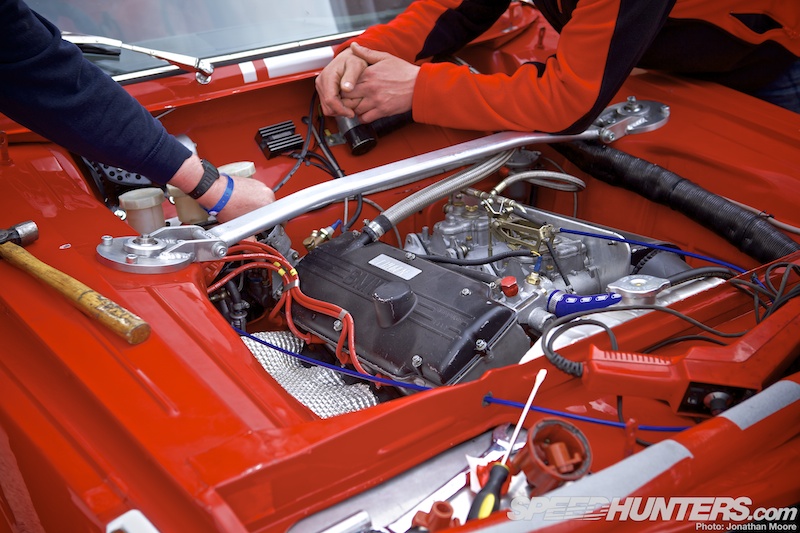
It’s interesting that this team chose the limited edition FN-badged car for their racer: the two-litre unit made it a classic touring car buzzbomb, complete with standard dogleg ‘box…
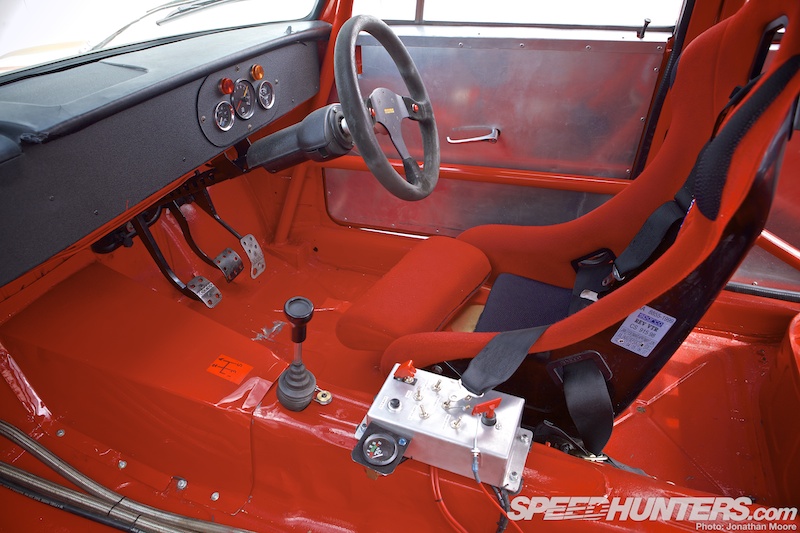
…with a reminder by the gearstick! This stripped-out racing version sat just outside the 1966 cut-off, so instead had to race against the likes of Capris, Camaros and Porsches.
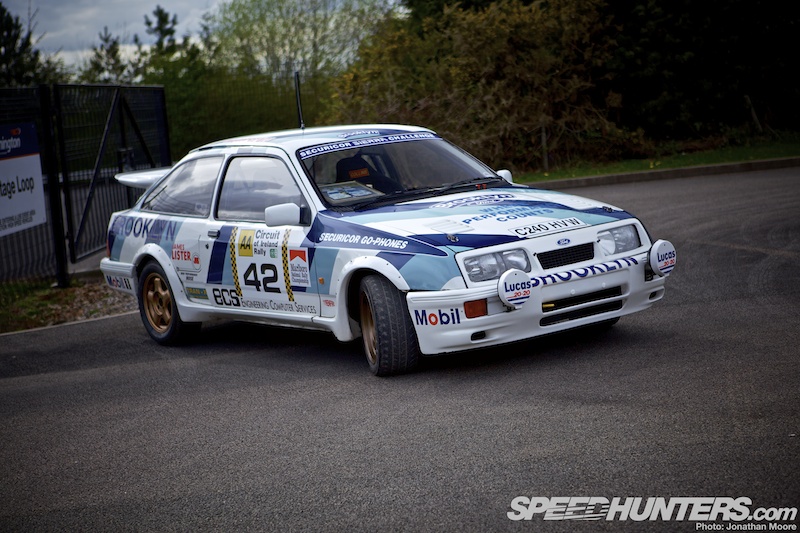
The legend of Ayrton Senna is intrinsically linked to Donington: it’s 20 years since he first drove a Formula 1 car during a Williams test at the track, and the DHF lined up a number of rare Senna cars. The collection of F1 cars included the Williams he drove that day (Keke Rosberg’s FW08C) and… a Ford Sierra?!
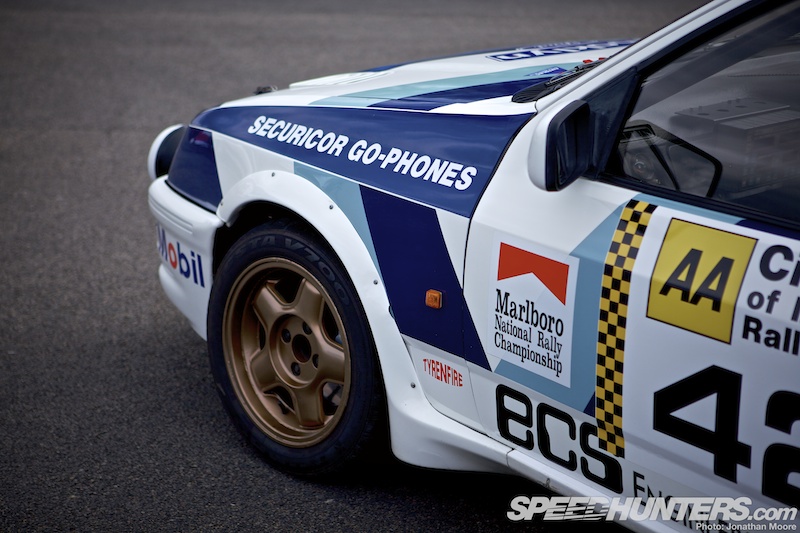
This was one of five cars that was lined up for the F1 champion-to-be to test in a Welsh forest in 1986, part of a feature for Car And Conversions Magazine. The Metro 6R4 that he also drove that day was another on show at Donington.
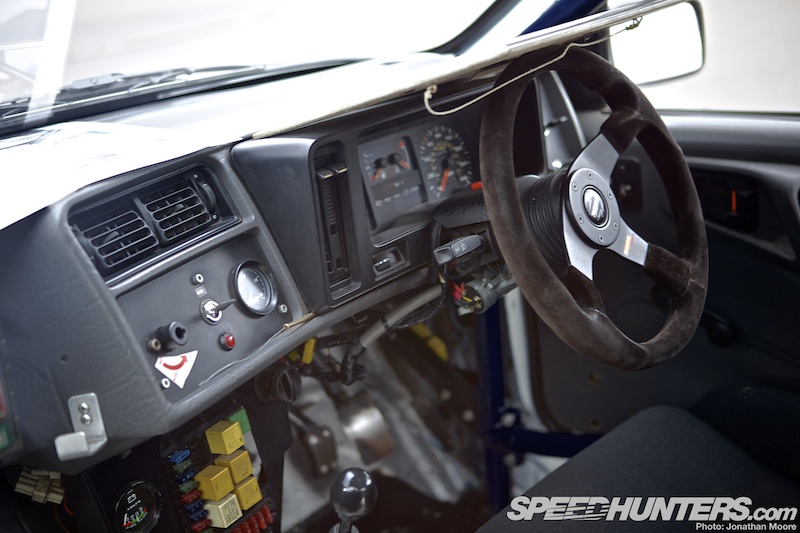
Okay, so it was only a one-off drive for Senna (like the Group C New Man Porsche 956 he’d driven two years previously at the Nürburgring 1000km), but that still gives this Sierra some serious cachet.
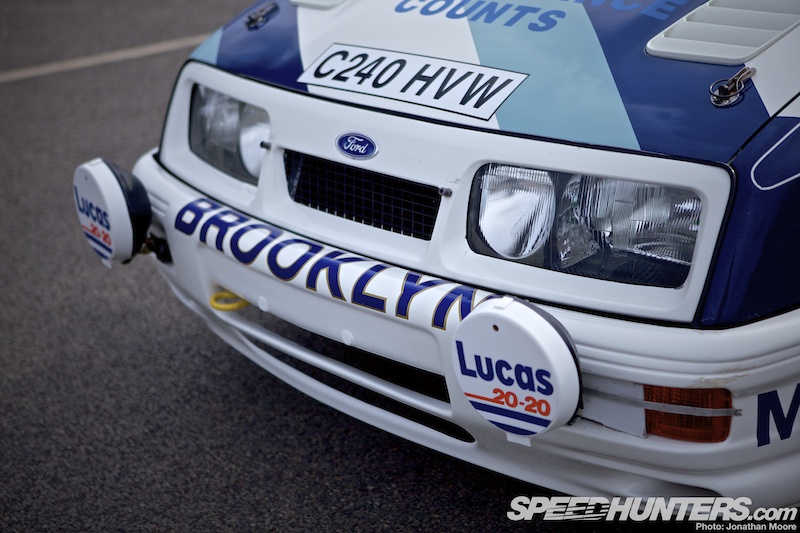
Sierras might be better known in their Group A touring car form, but they also made pretty handy rally cars on tarmac despite being relatively heavy against the four-wheel drive opposition in the post Group B era.
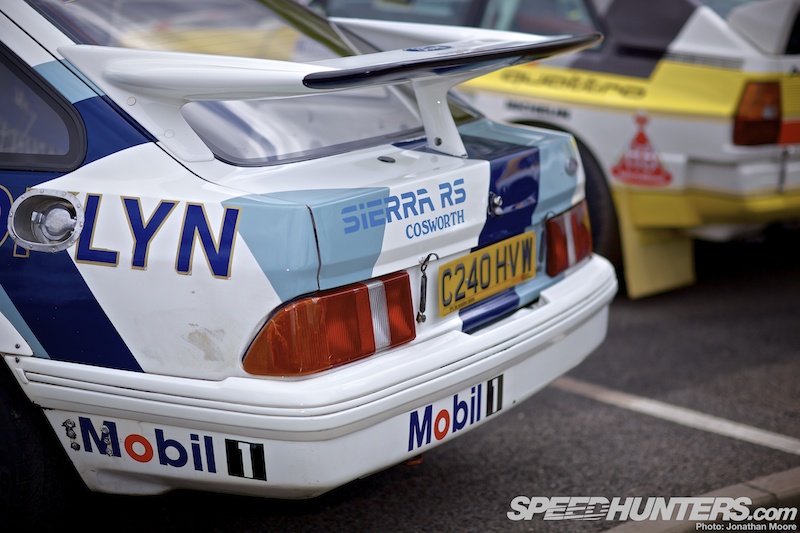
Cosworth power was what pushed the Sierra to victories at a national level, and the whale tail wing gave the Fords a unique look. With the tail hanging out and the exhaust spitting flame, Sierras still makes an awesome sight.
Jonathan Moore
Instagram: speedhunters_jonathan
jonathan@dev.speedhunters.com
Donington Historic Festival on Speedhunters


















